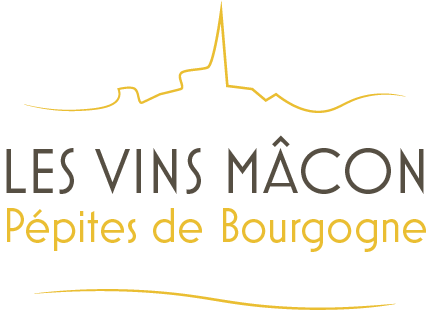Mâcon-Montbellet
The wines
Whites
Mâcon-Montbellet whites are pale yellow gold in color with silver highlights. More austere than the wines of neighboring appellations, the nose offers vegetal notes of box and straw combined with green almond and a certain minerality brought by a touch of stone. In the mouth, they are broad and fatty, leaving an appreciable length and fruity chewiness. Mâcon-Montbellet is a little-known wine that is perfect for enjoying in its youth.
Colors
Production

mâcon-Montbellet
An additional geographical denomination that is part of the Régionale Mâcon appellation in the Mâconnais.
According to the 2005 specifications rules, the name Mâcon-Montbellet refers to white wines from grapes grown within a defined area in the village of Montbellet.
Situation
Located on the foothills of the Mâconnais, the terroir of Montbellet is bordered by the River Saône to the east and protected to the west by the Mâconnais hills. To the south, the vines run alongside the first plots of Viré-Clessé, while to the north is the start of the Uchizy AOC.
In the Mâconnais, one can still see the traces of its agricultural heritage in its agrarian structures, but in Montbellet, its polyculture past is more evident. From the main road, one can take in huge open fields of crops alongside the fertile pastures of the Saône Valley, bordered by poplars. Vines, a more delicate crop, found their place close by the scattered hamlets, recalling the strategic presence of other feudal landowning powers: Marfontaine, the comtal fiefdom of the fearsome Barons of Montbellet in the 12th century, and Mercey, property of the Templar Commandery of Chalon-sur-Saône, taken over in 1333 by the influential knights of the Order of St. John of Jerusalem.
Terroir
Level 1
Near to the Bresse plain, the vines enjoy the influence of the contrasting continental climate of the Saône corridor, along which glacial air flows in winter, sometimes bringing fog, and with high average temperatures in the summer. In this area of the Mâconnais foothills, the limestone basement gradually plunges down beneath the sand and alluvium of the Saône Valley, which means that the topography of the terroir of Montbellet is a shallow slope from west to east, from 230 meters above sea level in Thurissey to 180 meters above sea level.
Level 2
At Thurissey, the vines grow at the bottom of the slope facing east, along the last extension of the hillside in the Viré-Clessé appellation. The terroir sits atop a carbonate substrate from the Kimmeridgian, dating back some 155 million years, with a high iron content. As one moves towards the Saône valley, irregular patches of limestone emerge from more recent fluvial alluvium. These sunny prominent areas offer white clay soil with lots of pebbles derived from Jurassic limestone and marl, torn from the hillsides during the last ice age.

